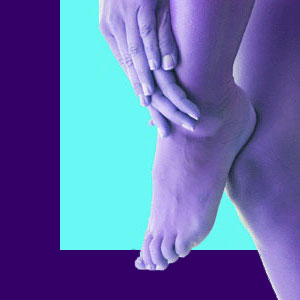
Foot drop is a somewhat common and scary lower back pain symptom most often associated with herniated discs in the lower lumbar spine. A dropped foot is not always a tell-tale sign of nerve compression, unless it is studied to make sure that the diagnosis actually fits the symptomatic profile. There are many other structural and mindbody reasons why a dropped foot may occur, so be sure to compare all diagnostic tests to the actual clinical expression in order to establish a firm tie between the muscular issue and the suspected spinal causation.
This essay defines dorsiflexion deficits and explains why they occur.
What is Foot Drop?
Dropped foot is described as a weakness in the muscles which elevate the front of the foot, called a dorsiflexion deficit. Patients will have difficulty lifting their toes and often stumble when walking. Some patients feel a reduction in the ability to raise the foot, while others suffer a complete loss of this functionality.
Foot drop testing is common for orthopedists and neurologists to perform during any lower back pain exam and can be very telling as to the potential causes of the pain. Without proper neurological correlation, treating a dropped foot issue can be incredibly frustrating, since therapies may not be targeting the real source of the muscular deficit.
Dropped Foot Causes
The most common explanation for a dropped foot is a herniated disc at L4/L5 or L5/S1. The most logical reason for this to occur is compression of the L5 nerve root, although on occasion, the L4 or S1 nerves are implicated, as well. Spinal osteophytes can also take the blame for impingement of the affected nerve, as can spondylolisthesis, scoliosis and other spinal issues, such as severe lumbar spinal stenosis.
Although all these conditions can enact a dropped foot if the diagnosis is correct, many times, the theory is mistaken and the symptoms will exist for another reason. Circulatory concerns and other neurological problems can create a dropped foot, but one of the most common sources is certainly regional ischemia.
Foot Drop from Ischemia
Oxygen deprivation of the lower lumbar structures is one of the most common expressions of this terrible condition. When ischemia is severe and lasting, the very nerve roots can lose structural integrity and the ability to function correctly. This can cause a dropped foot and many other related symptoms, such as tingling, numbness, weakness and pain throughout the lower body.
When the symptoms are too widespread and far ranging to be accounted for by a single diagnosed structural issue, the condition is more likely to be ischemic. This is why a detailed symptomatic profile is needed, although rarely performed by most back doctors, who simply assume the structural issue is to blame. No wonder all the subsequent treatments fail; the diagnosis may be wrong.
Complete and well-defined dropped foot, without extraneous symptoms, has a better chance of coming from a pinched nerve, while incomplete or diverse symptomologies are likely to be from some other source altogether.
Many patients write in saying that they were diagnosed with a dropped foot due to a lumbar herniation and proceeded to have the advised surgery to correct the condition. Some post-operative patients enjoyed relief of pain and the muscular deficit, while others did not. In many cases, the surgery made matters worse, creating lasting numbness which was often blamed on scar tissue or nerve damage. Just be careful when pursuing any spinal surgery, since the results may not be as good as you hoped and may make the suffering permanent.




